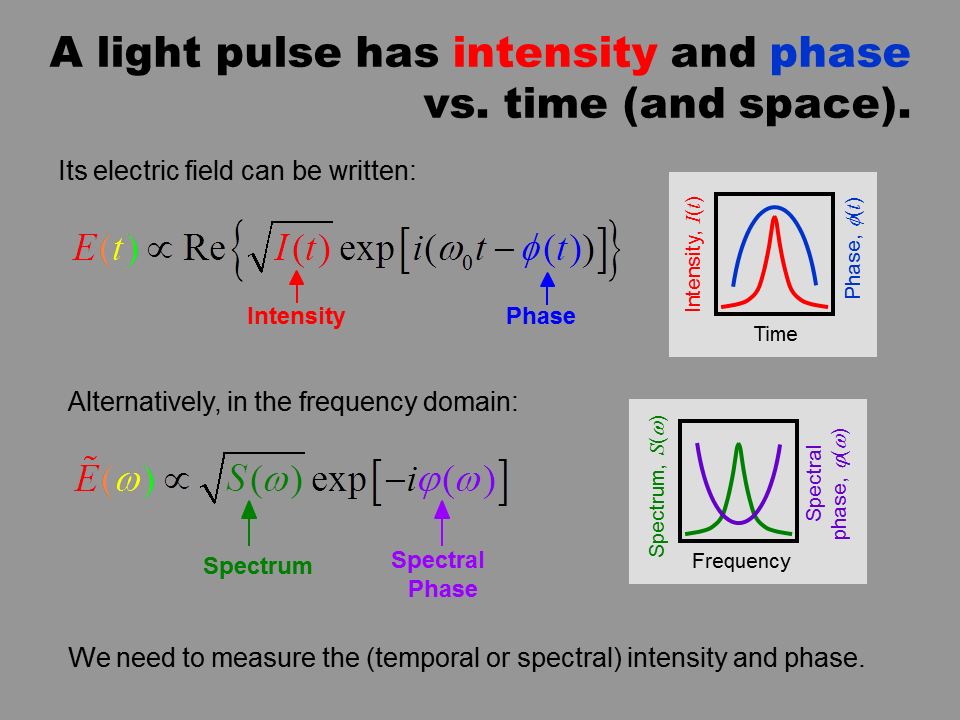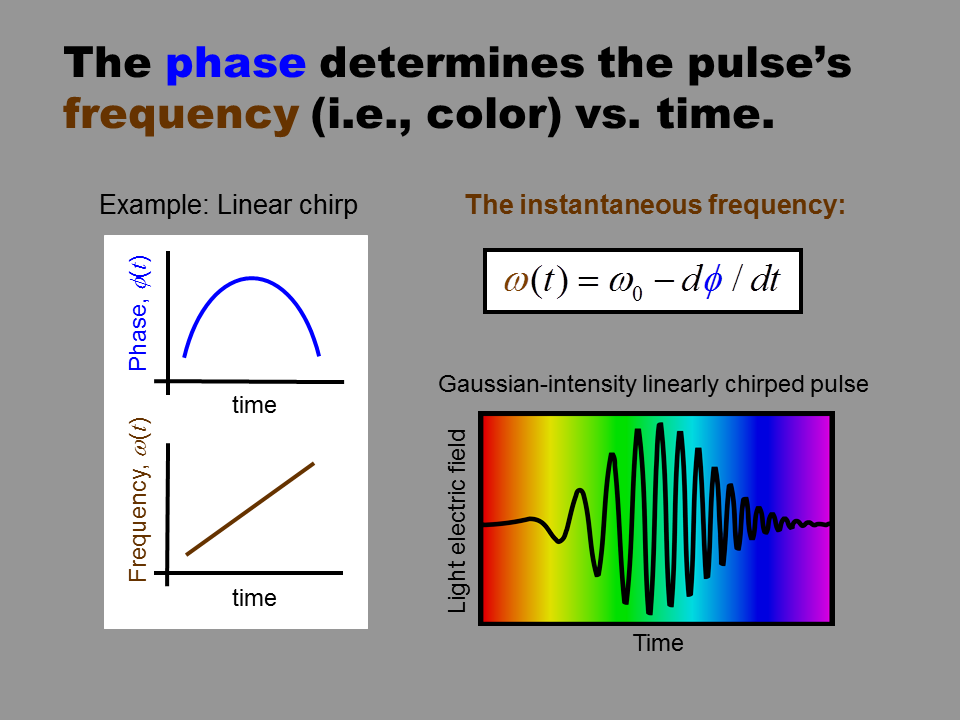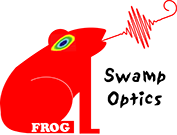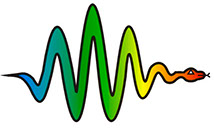What is the phase and why measure it?
First, what is the phase?
Light is an electromagnetic wave, so we'd like to know its electric field as a function of time (which also determines the magnetic field vs. time). Because any wave can be written in terms of an intensity and phase, these quantities are typically used to describe light waves. And they can be written as a function of time or frequency, so a light wave also can be said to have an intensity vs. frequency, which is the spectrum, and it has a spectral phase also, which is related to the temporal phase. But we'll focus on the temporal phase, shown in blue below.

What does the phase tell us? The color of the pulse as a function of time. The spectral phase does, too; it's basically the same idea, so we'll stop highlighting these terms in color.

A pulse with quadratic phase, as shown here, has a linear ramp in frequency (or wavelength). Such a pulse's electric field vs. time is shown at the lower right, where the background color indicates the instantaneous frequency vs. time. We say this pulse is chirped.
The shortest pulse for a given spectrum has a flat or linear (spectral) phase. It's curvature of the phase that lengthens the pulse and its intensity in time.
How does a pulse acquire a curved phase? Or should we ask, how does a pulse lengthen?
The answer is: by propagating through material. The simplest case is the quadratic phase shown above, which is actually the case for almost every ultrashort laser pulse ever generated. And if it isn't the case for yours, just send that pulse through a window or beam-splitter, and now you'll have chirp and a longer pulse.
A short pulse propagating through a medium acquires mainly quadratic phase and becomes chirped. The more material (typically glass) that a pulse experiences, the longer and more chirped it becomes.
And there are all kinds of other nasty phase distortions that can afflict an ultrashort pulse. For example, propagating an intense short pulse through a medium causes an effect called self-phase modulation, which also broadens the spectrum and is particularly difficult to remove.
So why measure the phase? Well, we usually want the shortest pulse, which is the same thing as wanting the flattest (spectral) phase. Clearly, knowing the phase is the only way to figure out how to remove the unwanted phase variations that are lengthening the pulse.
Fortunately, a pulse's phase distortion is usually simply quadratic, so it can be removed using a simple pulse compressor. If the phase distortions are more complex than quadratic, there are likely other problems, so, in this case, simply compensating for the phase distortions is a bad idea. In this case, you likely have more serious problems, usually major laser mis-alignment, but knowing the phase is essential to begin the process of fixing them.
Of course, some people like an interesting and complicated phase, in which case, well, it's even more important to be able to measure it!
You want to measure the phase?
You want to control the phase?
Copyright © 2022 Swamp Optics, LLC. All Rights Reserved.



